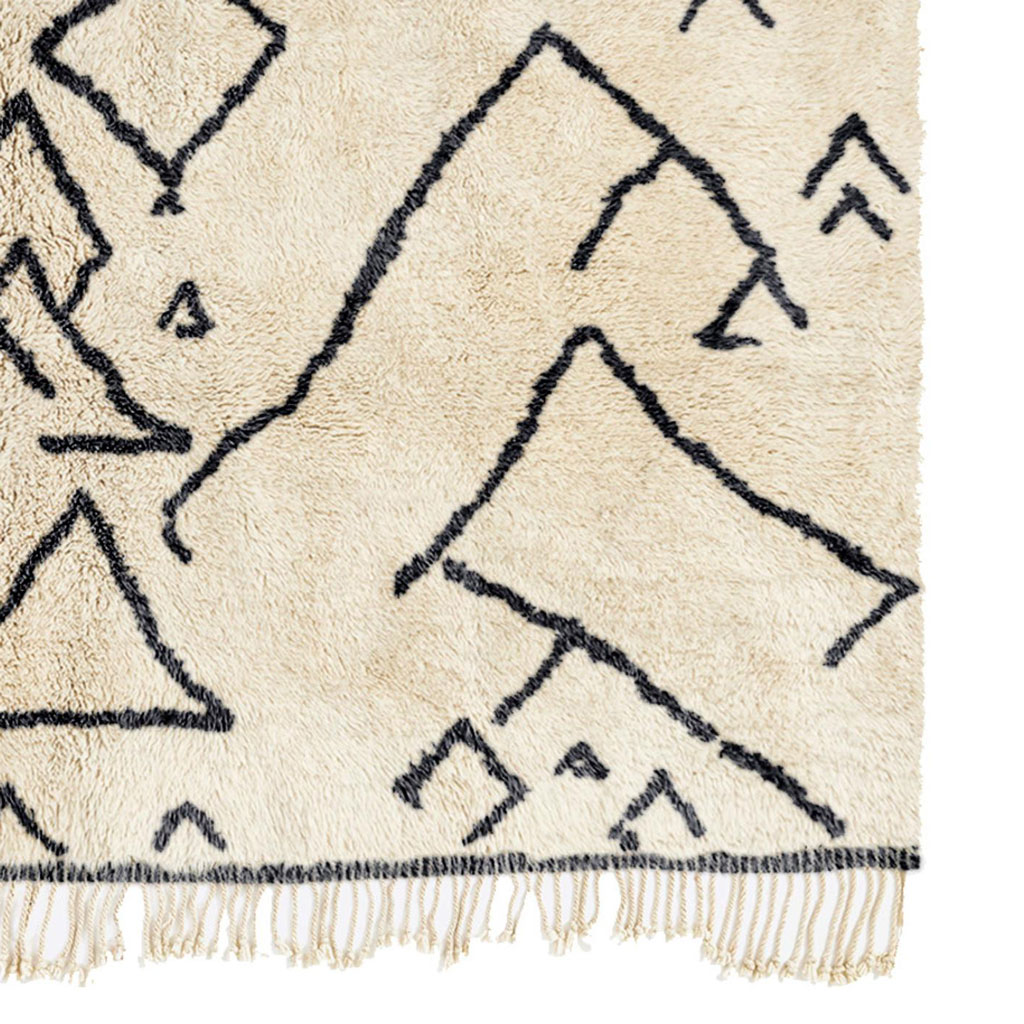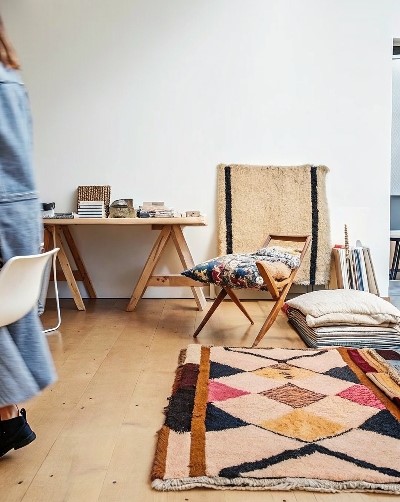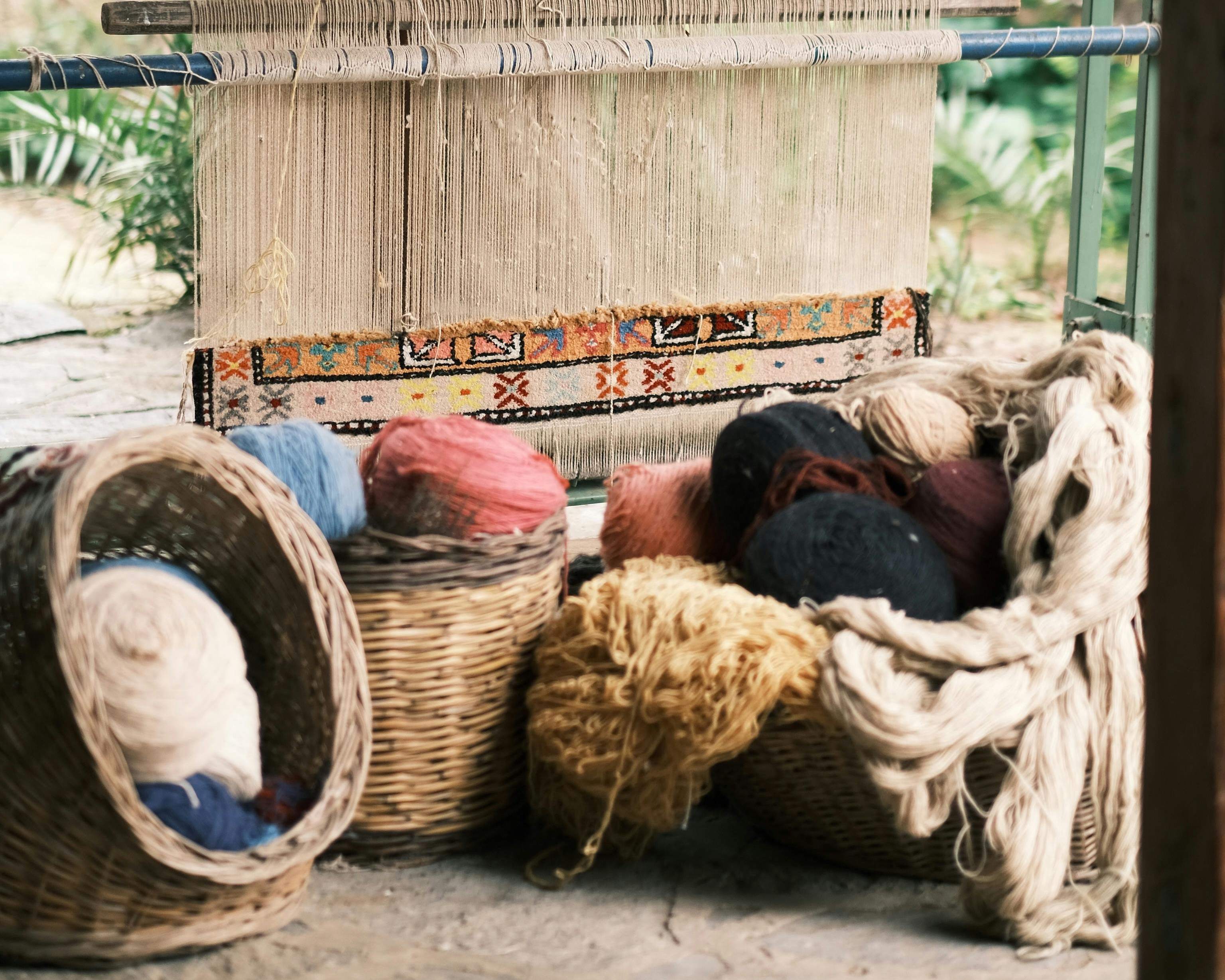
The many, many layers of translation involved became clear while researching and subsequently sourcing rugs in Morocco. We are obsessed with learning everything we could about each piece. "What does this symbol mean?" we'd inquire, as well as "What is the name of this rug?" We discovered over time that the answers are not precise or definitive, or that they have shifted significantly from one language or intention to another.

Tarifit in the north, Tamazight in the Middle Atlas, and Taselhit in the High Atlas and Anti-Atlas are the three main dialects spoken by the Amazigh people. These dialects are primarily spoken languages, not written languages. Phonetic interpretations explain why different spellings of the same name exist, and why there is no "correct" way: Ourain is also spelled Ouarain, and Zayane is spelled Zayan or Zaiane.
There is also a visual component that necessitates a versatile understanding of what we see differently. Some translation, whether in text or textile, is unfathomable, unknowable, or better felt than explained. The allure of these rugs, which have been made with such care and intention that they have survived for decades, isn't as unique as pattern or color. Each piece contains a hint of the unknown, the hidden layers of language. A weaver's trade secret.




